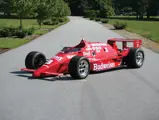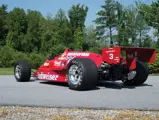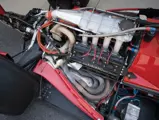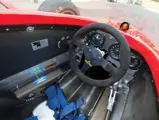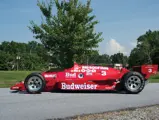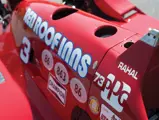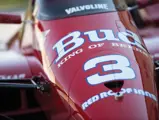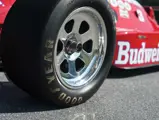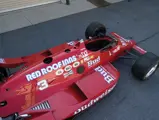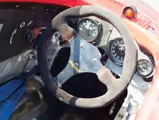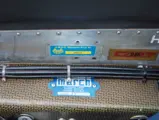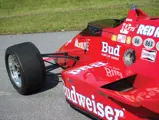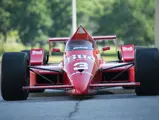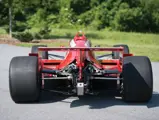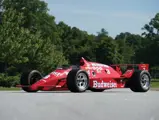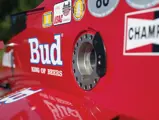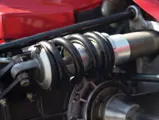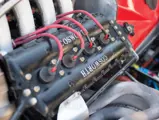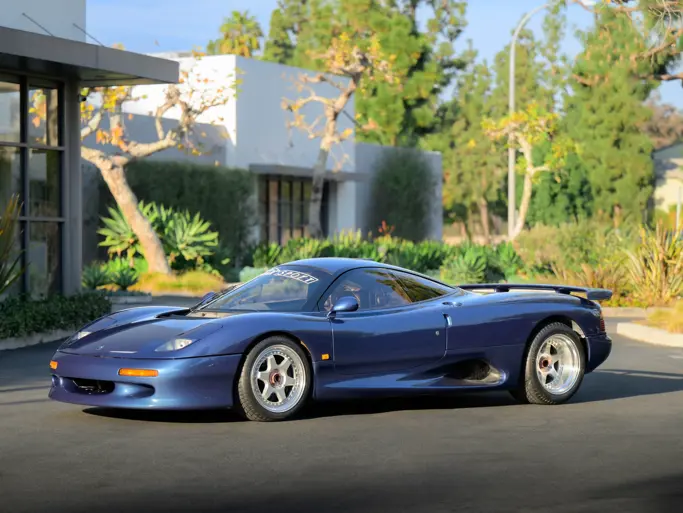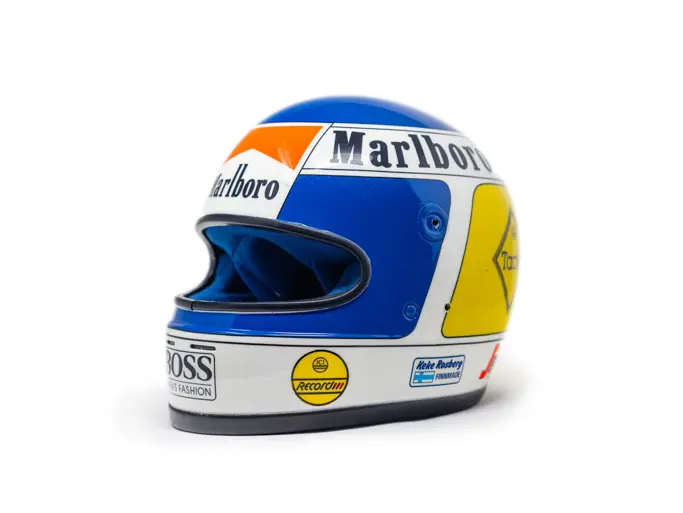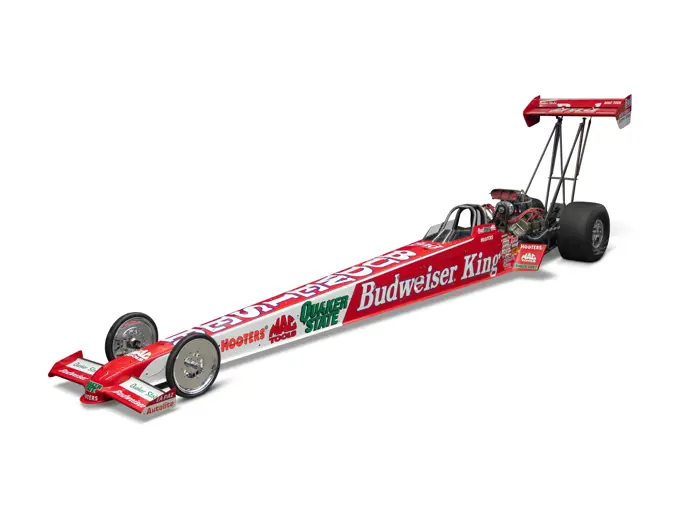Monterey 2014
1986 March 86C Indianapolis
{{lr.item.text}}
$1,750,000 - $2,500,000 USD | Not Sold
 | Monterey, California
| Monterey, California
{{internetCurrentBid}}
{{internetTimeLeft}}

- Winner of the 1986 Indianapolis 500
- Winner of the 1986 CART IndyCar Championship
- Driven by Indianapolis Speedway Hall of Famer Bobby Rahal
- Equipped with its original Indy 500-winning Cosworth DFX V-8
- One private owner since; first public offering in 24 years
- One of March’s five consecutive Indy 500-winning cars
- Groundbreaking Adrian Newey design
700 hp, 2,650 cc turbocharged Cosworth DFX V-8 engine with mechanical fuel injection, five-speed manual transaxle, four-wheel independent suspension with coil springs and telescopic shock absorbers, and four-wheel ventilated disc brakes. Wheelbase: 111 in.
JIM TRUEMAN & BOBBY RAHAL
History’s greatest race cars are sometimes not merely defined by race wins, rarity, or their constructor’s pedigree. The merit of such cars often draws on the importance of the people who built and raced them and the way in which they wove the threads of history into one thrilling race.
In many ways, the story of 86C-13 is that of team owner Jim Trueman, a former race car driver who found his greatest success as principal of the Truesports team he founded in 1982. Trueman initially drove in the Can-Am Series during the 1970s, where he met a young Denison University graduate, Bobby Rahal. The two men struck up a friendship, and Trueman offered Rahal mentoring advice and occasional assistance. After Trueman lent Rahal $500 for entry fees to Watkins Glen, the younger driver was convinced he might never be able to sufficiently repay the man who had shown him such generosity, but that day would eventually come.
Meanwhile, across the Atlantic, a new British race car constructor, March Engineering, appeared in 1969. March, an acronym for founders Max Mosley, Alan Rees, Graham Coaker, and Robin Herd, initially launched an ambitious attempt to field cars in no less than five different racing series. After finding only modest Formula One success during the 1970s, March would return in 1981 with a copy of Williams’ FW07 car. Although the new March faired poorly in F1 use, the platform provided a promising basis for the company’s entry into IndyCar racing. As the 1981 March 81C improved and steadily capitalized on the Indy circuit’s combination of oval tracks and road courses, March went on to supply the Indianapolis 500-winning car five straight times between 1983 and 1987, which was an unprecedented success.
Much of March’s chassis improvements can be attributed to a young engineer named Adrian Newey, who was assigned by Robin Herd in 1984 to develop the car in direct conjunction with the Truesports team and their promising young driver, Bobby Rahal. In 1982, Trueman had hired his old friend to be the principal driver for his new IndyCar team, and Rahal did not disappoint, handily capturing Rookie of the Year honors. After consulting with Truesports in 1984, Newey struck up a close working relationship with Rahal, which soon blossomed into a strong friendship, and their combined efforts on the car were assuredly central to Rahal’s 3rd place finish for the 1984 championship.
Ironically, Newey was hired away from Truesports after 1985 in a move engineered by Herd to market newer versions of the car to better financed teams, despite the fact that Budweiser had signed on to back Jim Trueman’s Truesports team. He eventually went on to great acclaim as a principal engineer with the successful Williams F1 team in the early 1990s and then the dominant Red Bull team of recent years. Despite Newey’s departure, the 1986 March chassis was still based in his 1985 design, and the tuning for Truesports was now assumed by Grant Newbury and team manager Steve Horne, who remained an ever-beneficial contributor to the car’s growth.
Truesports fielded three March 86C chassis in 1986, with each being powered by the turbocharged Cosworth DFX engine. Bobby Rahal took the checkered flag in six out of the season’s seventeen races (at Indianapolis, Toronto, the Mid-Ohio 200, Sanair, the Michigan 250, and the Laguna Seca 300 KM), earning him the 1986 CART Championship. Chassis number 86C-13 was used in most of these wins, but none of them was loaded with more drama than the season’s third contest at the Indianapolis 500, which was one of the storied event’s most thrilling episodes.
THE 1986 INDIANAPOLIS 500
Rahal entered into a lengthy duel with fellow veteran Rick Mears, and it appeared to be a showdown, until relative newcomer Kevin Cogan pulled a daring three-car pass on lap 188 that put him in 4th place. With eight laps remaining, Cogan again made a move that vaulted him in front of Rahal and Mears, and the driver seemed to be poised for his first Indy win. A caution flag prompted by an unrelated accident in the middle of the pack then slowed the action for a few laps, enabling Rahal and Mears to save fuel and line up directly behind Cogan, resulting in a thrilling final three-lap sprint.
When the pace car pulled aside, Rahal’s reaction on the throttle was slightly quicker than the others, and he roared alongside Cogan heading into the turn, sending the younger driver a bit wide and into 2nd place. The two-man race continued for the last two laps, with Rahal flooring the accelerator and maintaining his narrow lead over the course of the final sprint, to conclude one of the closest finishes in Indianapolis 500 history.
As great as the victory was for Bobby Rahal, it was even sweeter for his mentor, Jim Trueman, who was sadly diagnosed with cancer and was not expected to live much longer. Trueman had just celebrated his 51st birthday a week earlier, when the race had originally been scheduled to run before being rained out. The March still wore the “Happy Birthday” sticker to him.
Rahal gladly shared full credit for the win with Trueman in the winner’s circle, telling reporters, “The $500 he gave me [at Watkins Glen] was more than anyone had ever invested in me, and I've never forgotten him for it. Everybody knows I love the guy. After all the things Jim has done for me over the years, I don't know if anything can repay it.”
Trueman was as touched as he was proud, commenting, “When he was coming across the finish line, I wouldn't even look…I told Bobby [before the race] to do the best he could, and he drove the best race of his life.” Trueman, still retaining the fiery spirit of an indomitable competitor, passed away just eleven days later, at the age of 51.
Following the conclusion of Rahal’s 1986 championship season, chassis 86C-13 was buttoned up for storage, and Steve Horne soon began planning to liquidate the three cars in favor of newer ones for the 1987 season. As he later explained after the 86C examples were advertised for sale in an early 1987 issue of Autoweek, “Generally, very little of the equipment is kept over from the previous season. To run up front in this sport, you have to have the best possible equipment.”
Interest was expressed by various parties, and 86C-13 ended up being used on a Budweiser promotional tour during 1987. Prior to the tour, it was returned to its original Indy 500 specifications, which included its original rear wing, its original race-winning Cosworth engine, and its proper Indianapolis livery (including Jim Trueman’s “Happy Birthday” sticker). The car was then sold to the current and only private owner, a respected collector in the southern U.S. The March was appropriately displayed by him in a climate-controlled environment, where it was featured as a semi-permanent homage to the exciting Indy 500 win and its significant participants.
Chassis 86C-13 was exhibited in this respect for close to 25 years, and it has only been used for a small handful of demonstrations since being retired: once at the Indy Speedway and three times at the Goodwood Festival of Speed, where, in 2011, during their celebration of the Indianapolis 500 Centennial, Bobby Rahal and Adrian Newey drove the car up the Goodwood House driveway to the cheers of 140,000 fans. The 86C also made an appearance at the 2011 Amelia Island Concours d’Elegance as part of a Bobby Rahal tribute, where it won a major award from Autoweek magazine.
This important and iconic race car is an exquisite piece of modern racing history that encompasses the stories of March, Indianapolis Hall of Famer Bobby Rahal, engineer par-excellence Adrian Newey, Jim Trueman, and Steve Horne. It is also very well documented, as it is accompanied by the Bill of Sale from Truesports to the consignor, a written declaration of originality of the Indy 500-winning Cosworth DFX engine from Truesports, Horne’s original testing and racing notes from the 1986 season, and an unusual handwritten note from Enzo Ferrari congratulating Trueman on the Indy 500 victory.
This powerful and historically important Indianapolis 500 winner offers open-wheel racing connoisseurs a one-of-a-kind opportunity to acquire a true champion. As such, it also remains one of only a handful of pre-IRL Indy 500 winners in private hands, and it is possibly the only one to retain its original winning engine. While many cars have provenance, rarity, and historical importance, few can offer such an astounding combination as a legendary chassis, driver, team, and venue. There will only ever be 1986 Indianapolis 500 winner. This incredible machine is it!

